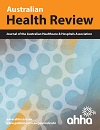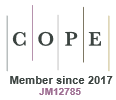AH25104Retention and attrition of chiropractors in Australia: the Workforce Retention and Attrition Project
 , Abbey Chilcott, Michael Shobbrook AM, Colleen Papadopoulos
, Abbey Chilcott, Michael Shobbrook AM, Colleen Papadopoulos  , Rechu Divakar, Lee Barclay, Kirsten Hibberd, Eva Saar and Jade Tan
, Rechu Divakar, Lee Barclay, Kirsten Hibberd, Eva Saar and Jade Tan
What is known about the topic? Chiropractors play an important role in the treatment of health conditions, particularly in a growing and ageing Australian population. It is important to understand the effects of workforce attrition, specifically factors that may contribute to chiropractors leaving the profession. What does this paper add? Although the overall numbers of chiropractors in Australia have increased as well as those entering the profession compared to those exiting, this paper highlights some issues in workforce stability, particularly among those with limited registration, non-standard work hours per week, and casual/temporary contract status. What are the implications for practitioners? This research will help to inform strategies to improve the workforce retention of chiropractors in Australia.
AH25104 Abstract | AH25104 Full Text | AH25104PDF (671 KB) | AH25104Supplementary Material (206 KB) Open Access Article




